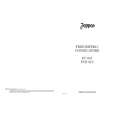|
Dla tego produktu nie napisano jeszcze recenzji!
 ;
Dokładna dokumentacja, pomogła w szybkiej naprawie telewizora. Dziękuję!
 ;
jedyne do czego mogę mieć zastrzeżenie to jakość zdjęć zawartych w przesłanej instrukcji serwisowej ponieważ są fatalnej jakości, praktycznie nieczytelne. tak poza tym jestem zadowolony to jest to czego szukałem.
 ;
Wszystko w porządku.
Instrukcja czytelna i kompletna.
Dziękuję.
all right!
thank you.
 ;
Bardzo dobra instrukcja. Zawiera wszystko co potrzeba, polecam!
 ;
Instrukcja jest OK. Schematy czytelne, opisane niektóre procedury.
be between 1 M and 12 M . When the exposed metal does not have a return path to the chassis, the reading must be infinity.
LEAKAGE CURRENT HOT CHECK
1. Plug the AC cord directly into the AC outlet. Do not use a isolation transformer for this check. 2. Connect a 1.5 k , 10 W resistor, in parallel with a 0.15 F capacitor, between each exposed metallic part on the set and a good earth ground , as shown in Figure 1. 3. Use an AC voltmeter, with 1 k /V or more sensitivity, to measure the potential across the resistor. 4. Check each exposed metallic part, and measure the voltage at each point. 5. Reverse the AC plug in the AC outlet and repeat each of the above measurements. 6. The potential at any point should not exceed 0.75 V RMS. A leakage current tester (Simpson Model 229 equivalent) may be used to make the hot checks. Leakage current must not exceed 1/2 mA. In case a measurement is outside of the limits specified, there is a possibility of shock hazard, and the receiver should be repaired and rechecked before it is returned to the customer.
Figure 1
2. X-RADIATION
WARNING :
1. The potential source of X-Radiation in TV sets is the High Voltage section and the picture tube. 2. When using a picture tube test fixture for service, ensure that the fixture is capable of handling 25.0 kV (Model: A, B, C, D, E, F, G) or
4
|

